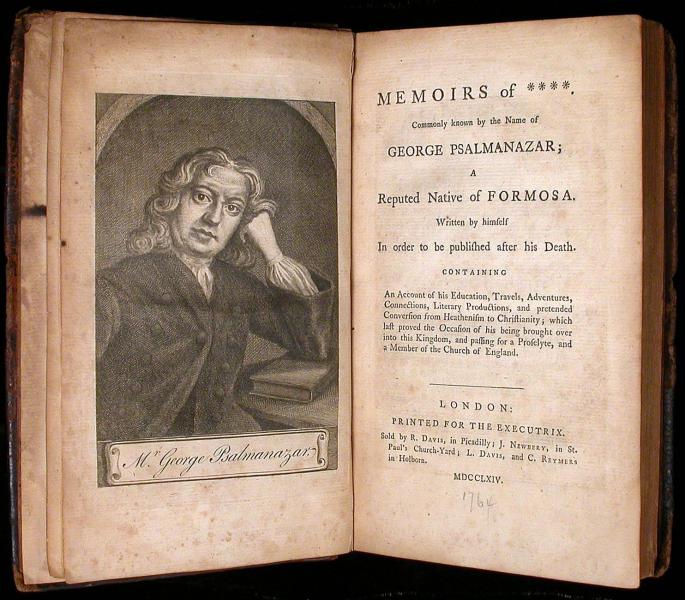The fictitious adventures of a 17th century con artist, who fooled London society for years with his made-up travellers’ tales, were put on public display at St John’s College, Cambridge five years previous.
 The 1704 work, The History of Formosa, describes in great detail the culture, language and customs of the island nation of Formosa, modern-day Taiwan. The book was supposedly written by a native of Formosa who was brought to Europe by Jesuit missionaries, but all is not as it seems.
The 1704 work, The History of Formosa, describes in great detail the culture, language and customs of the island nation of Formosa, modern-day Taiwan. The book was supposedly written by a native of Formosa who was brought to Europe by Jesuit missionaries, but all is not as it seems.
The catch is that the author, who called himself ‘George Psalmanazar’, was actually a white, blond-haired Frenchman who had never left Europe. Every detail of Formosan life that the book describes is completely made up. Psalmanazar was a fantasist who, like an early Walter Mitty, spent his life in a world of his own imagination. His hoax was so successful that to this day, we still don’t know his real name.
To modern readers, Psalmanazar’s stories seem far-fetched but they successfully fooled an English audience with little or no experience of other cultures and a view of the world that saw foreign people as primitive and savage. Psalmanazar’s book was an unqualified success.
Even today, we still know very little about who Psalmanazar really was, because his posthumously-published autobiography deliberately obscures the details.
In his final years, he wrote a frank confession with instructions in his will for it to be published after his death in 1763. This account, entitled Memoirs of XXX, Commonly known by the name of George Psalmanazar, a reputed native of Formosa.

No comments:
Post a Comment